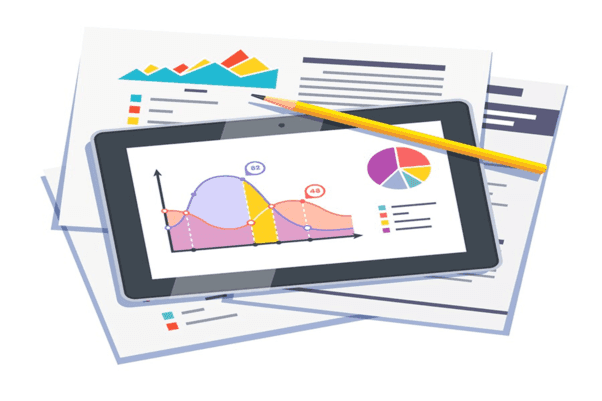The Data-Driven Frontline: How Lt. Gen. Paul Stanton Is Rewiring Warfare with Analytics A New Era of Digital Warfare Begins

Lt. Gen. Paul Stanton is ushering in a new chapter in military readiness—one not marked by new weapons or units, but by a bold emphasis on data as the battlefield's lifeblood. As the Commander of Joint Forces Headquarters-Department of Defense Information Network (JFHQ-DODIN) and Director of the Defense Information Systems Agency (DISA), Stanton is forging a critical bridge between two powerful but distinct entities by launching a data analytics support cell that seamlessly integrates their missions.
“We have recently established a data analytics support cell that crosses the boundaries between the Joint Force Headquarters and DISA,” Stanton told SIGNAL Media in his first major interview since taking over both organizations. “DISA has a lot of data. The Joint Force Headquarters has an operationally relevant maneuver mission set. We have to combine those two in a way that makes sense.”
This cross-functional effort is designed to give military leadership real-time access to relevant data—not just information, but insight—that enables smarter, faster decisions on the digital battlefield.
Sensors, Soldiers, and the Silent Stream of Data
Stanton paints a vivid picture of the modern combat environment. Today, nearly every piece of military equipment—from tanks to the M4 rifle—is either producing or consuming data. “There’s not a single system on the battlefield that isn’t a data producer or data consumer—or isn’t intended to be in the near future,” he explained. “When we execute warfare, there’s a data dependency.”
From the operations floor, Stanton says he’s constantly met with crucial questions: Is the data available? Can we collect it? Do we need to deploy a new sensor? Is the pipeline in place to move this data securely to the cloud for analysis? Do we have the algorithms needed to derive actionable insight? The newly minted analytics cell is designed to resolve such questions—quickly and accurately.
This process, which Stanton calls the analytic scheme of maneuver, flips the traditional model. Instead of collecting data and asking what it can tell you, Stanton’s team starts with the mission's questions—then identifies which data needs to be captured, transported, aggregated, and analyzed to answer them.
From Concept to Combat-Ready
Remarkably, this innovation wasn’t born from a massive budget or long-term development plan. It was built out of hide—a military term meaning Stanton formed the analytics cell using internal resources. He sent out a call across both DISA and JFHQ-DODIN for talent: Python coders, data engineers, algorithm developers, and those who knew how to manipulate and normalize massive datasets.
He cherry-picked a small but sharp team to create momentum. “I cherry-picked the team, a small team on purpose in order to drive immediate results,” he said. Stanton is now writing formal position descriptions, standardizing the structure, and preparing for the summer military manning cycle when new recruits will be onboarded. “I’m pleased with my draft picks,” he joked.
Cyber Command Elevation and the Road Ahead
Driving this transformation is also the elevation of JFHQ-DODIN from a component command to a sub-unified command under U.S. Cyber Command—a move Stanton views as both a challenge and an opportunity.
With that shift comes deep mission analysis: How should the team train? How should the organization evolve? And most importantly, how do they ensure this analytics model becomes institutionalized, rather than a temporary fix? These are the questions he’s tackling with U.S. Cyber Command as they prepare for the April 22 milestone, marking initial operating capability under the new structure.
This isn't just about upgrading an office—it’s about reshaping the way the Department of Defense views data in mission planning, execution, and threat response.
People, Not Just Platforms
Though the technology is critical, Stanton emphasizes that people remain the key to success. A large portion of JFHQ-DODIN’s team is made up of contractors, and Stanton is looking to industry to help fill gaps. He’s also revising job descriptions for government civilians and actively recruiting military personnel with data science skills.
“We’ll take lots of data scientists on my team,” he quipped. But beneath the humor lies a clear message: this mission is active, evolving, and looking for talent ready to serve not just in combat zones, but in the heart of a new data-driven defense.
Lt. Gen. Stanton’s effort is a case study in modern military innovation—a blend of strategic insight, technical leadership, and operational urgency. As adversaries become more sophisticated and cyber domains more contested, the ability to see the battlespace through data will no longer be optional. It will be mission-critical.
And with this bold new analytics cell, Stanton isn’t just preparing for that future—he’s building it.
Business News
How Executives Can De-Risk Payment Operations in Regulated Industries
Why Your Engine Air Filter Plays a Bigger Role Than You Think
Phoebe Gates-Backed Startup Secures US$30 Million Investment to Fuel AI Shopping Platform
Anthropic’s AI Bubble Warning: A Call for Caution in the Hype-Driven Race
The Ultimate Guide to Backlink Packages and Guest Post Services: Supercharge Your SEO in 2025




















